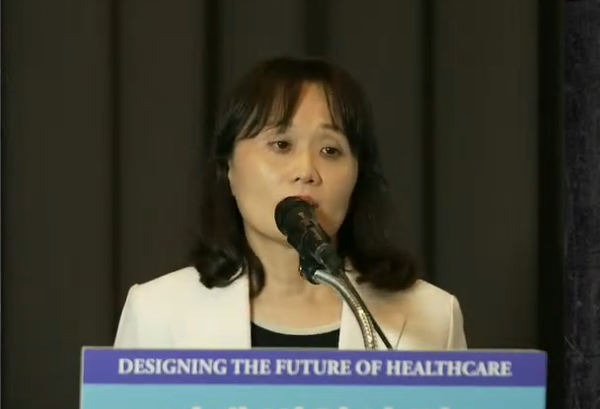Korea’s digital health industry lags far behind those of advanced countries, and, unless the domestic laws and systems are changed, its future course will deviate from the global trend, a state-run agency said Wednesday.
Assuming the U.S. industry’s competitiveness is 100, Korea scores only 77 points, according to experts. This is because some markets in the service sector have not been activated sufficiently, according to the Korea Health Industry Development Institute (KHIDI).
More specifically, the domestic medical laws and various systems, such as healthcare provisions and health insurance payments, are not set up in ways to reinvigorate the digital health industry, KHIDI pointed out. Besides, the nation has yet to activate remote, multidisciplinary treatments, permit telemedicine between physicians and patients, and establish and use medical data infrastructure needed for the sector’s growth, it added.

“To strengthen the competitiveness of the domestic digital health industry, the government should improve systems to register and apply health insurance reimbursement, build infrastructure related to R&D, clinical trials and commercializing developed products, and ease regulations concerning the licensing of medical equipment,” it said.
Kim Ji-eun, a senior researcher at KHIDI, made these and other points during her presentation at a conference hosted by The Korean Doctors’ Weekly, the sister paper of Korea Biomedical Review.
Kim said the KHIDI report was based on consultations with 15 experts – five each from digital healthcare, medical, and industrial fields.
Kim said that the nation first needs to define the digital health industry correctly -- the use of information and communication technology (ICT) grafted to health and medical areas -- to prevent confusion with digital healthcare.
The World Health Organization (WHO) defines digital health from the term eHealth that uses ICT in the health field, which also includes mobile health (mHealth), along with advanced computer science technologies such as big data, genomics, and artificial intelligence (AI).
Other global organizations, including Canada Health Infoway and the European Society of Cardiology, also called digital health an ICT used to provide medical services, promote health, treat patients, conduct studies, educate health providers, manage diseases, and monitor public health.
The KHIDI researcher said that Korea needs to establish a more detailed concept for digital health and its derivative industrial fields, including mobile healthcare, remote treatment, precision medicine, AI service, and genome sequencing.
The global digital health industry market expanded to about $152 billion in 2020, equivalent to 35 percent of the $433 billion semiconductor market. The U.S. and Europe have a dominant position in the field, taking up about 68 percent of the entire market with active use of telehealth.
The domestic market size differs depending on research institutes, but the Ministry of Food and Drug Safety estimated it at 1.9 trillion won ($1.67 billion) in 2018, surged to 6.43 trillion won in 2019.
"The domestic system offers weak incentives for health providers in the same field to team up with one another and permits it in a limited way, hampering the use of digital health in real life," Kim noted.
Kim cited the case of Seoul National University Bundang Hospital, operating an electronic intensive care unit (e-ICU) and providing a remote service model between partner hospitals, as one of the front-runners in this area.
“Considering the hospital’s service provision using mobile health apps and wearable devices, users’ fitness levels improved and disease management improved,” Kim said. “The government needs to find more facts based on industrial situations, seek ways to enhance competitiveness and examine how to evaluate and compensate progress.”

